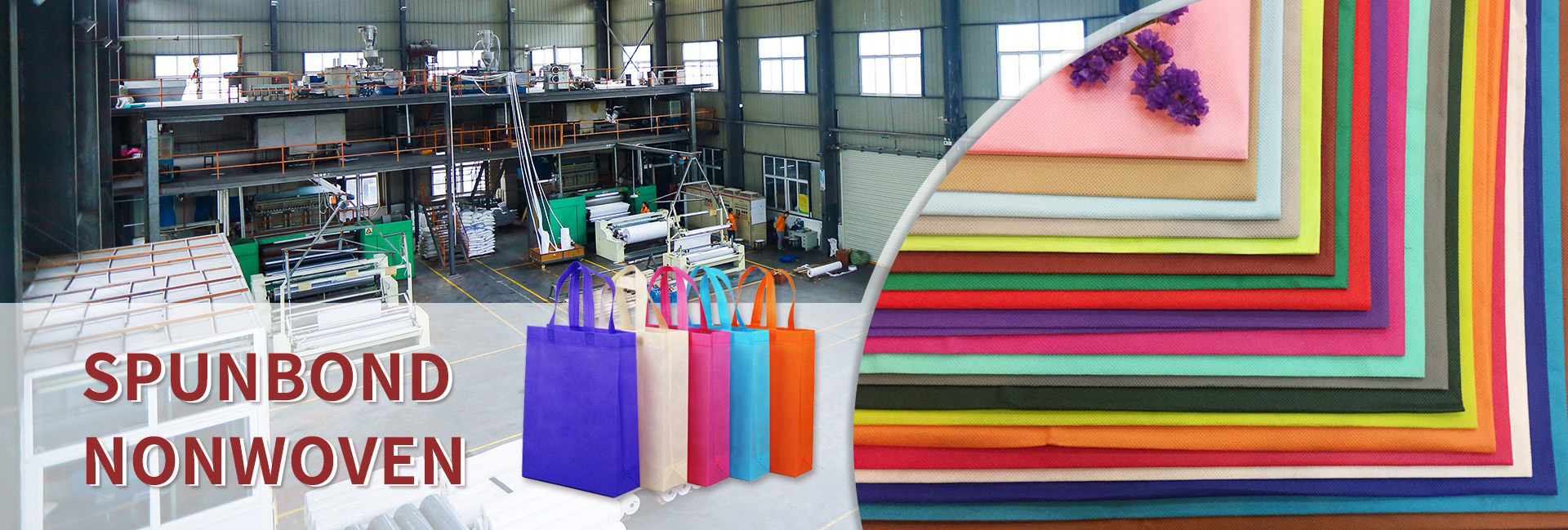What is the difference between non-woven fabric coating and film coating. We need to first understand the specific definitions and processes of these two processes.
Membrane coating
It refers to uniformly coating molten plastic on the surface of non-woven fabric through a laminating machine to form a thin film. This process usually uses an extruder to heat and melt plastic particles, then extrudes them through a die, covers them on non-woven fabric, and solidifies them through a cooling roller. Products that have been coated may place greater emphasis on waterproofing and are commonly used in medical or packaging materials.
Film covering
It refers to bonding pre made plastic film onto non-woven fabric through hot pressing or adhesive. Film lamination can use different film materials, such as PE, PP, PET, etc., to bond the two through hot pressing or adhesive bonding. Film coating may provide more diverse surface treatments, such as different glossiness or texture, suitable for products that require specific appearances, such as shopping bags or decorative materials.
The difference between non-woven fabric coating and film covering
Non woven fabric coating and film covering are two different surface treatment processes, mainly used to endow non-woven fabrics with functions such as waterproofing, anti-seepage, enhancing strength, or improving appearance. The core difference between the two lies in the processing method, material bonding form, and final performance. The following is a detailed comparison:
Materials and Structure
Coating plastic raw materials: melted resins such as PE, PP, EVA, etc. Single layer membrane structure, molten plastic directly covers non-woven fabric, the membrane layer is tightly bonded to the substrate, and there is no risk of interface delamination.
Film types: PE, PP, PET, aluminum-plastic composite film, etc. Composite structure: non-woven fabric+prefabricated film (possibly containing adhesive layer), with interface bonding strength issues.
Performance differences
waterproofness
The non-woven film layer is continuous and pore free, with excellent waterproof performance (static water pressure ≥ 5000Pa). Laminated non-woven fabric relies on the integrity of the film, and if the film has defects, its waterproof performance will decrease (hydrostatic pressure is usually 3000-5000Pa).
breathability
The breathability of laminated non-woven fabric is poor (the film layer is completely sealed). Laminated non-woven fabric can achieve breathability and waterproofing by selecting microporous films (such as PE breathable films).
Bond strength
The fusion of non-woven fabric with melted plastic and fibers through physical infiltration results in high peel strength (≥ 2.5N/cm). Laminated non-woven fabric relies on adhesives or hot pressing bonding, with low peel strength (1-2N/cm), and long-term use may result in delamination.
Flexibility
When the film layer of non-woven fabric is thick, it feels hard to the touch. Thin films (such as 8-15 μ m) can be used for laminating non-woven fabrics to maintain a soft touch.
environmentally
Single material of laminated non-woven fabric (such as PP non-woven fabric+PP laminated film) is easy to recycle. Multi material composite of laminated non-woven fabric (such as PET film+PP non-woven fabric) is difficult to separate and recycle.
Application scenarios
Membrane coating
Medical protective clothing (waterproof and antibacterial), agricultural film (anti-seepage), and packaging lining (moisture-proof) require high-strength waterproof and low-cost industrial products.
Film covering
High end shopping bags (surface gloss), car interiors (composite decorative film), breathable sanitary materials, products that require multifunctional composite (such as breathable+waterproof) and customized appearance.
Cost and Efficiency
The cost of coating raw materials is low (using resin particles directly), and the equipment investment is high. Continuous production speed is fast (up to 200m/min), suitable for large quantities.
The procurement cost of laminated film is high, and the equipment complexity is low. Slow speed (50-100m/min), suitable for small batches and multiple varieties.
Environmental comparison
Coating: If a single material (such as a full PP system) is used, it can be recycled and pelletized; But if colorants or functional additives are added, the difficulty of recycling increases.
Film coating: Multi layer composite structures (such as PET film+PP non-woven fabric+glue) are difficult to separate and are usually treated as waste, with poor environmental friendliness.
Summarize
Film coating is suitable for industrial products with low cost and high waterproof requirements, but sacrifices breathability and flexibility. Film coating is suitable for high value-added and multifunctional composite products, and the film performance can be flexibly selected, but the cost and environmental friendliness are limited.
Suggestion for selection
Medical protection, agricultural coverage and other scenarios → Optimal coating process.
High end packaging and decorative materials → Optimal laminating process.
Dongguan Liansheng Non woven Technology Co., Ltd. was established in May 2020. It is a large-scale non-woven fabric production enterprise integrating research and development, production, and sales. It can produce various colors of PP spunbond non-woven fabrics with a width of less than 3.2 meters from 9 grams to 300 grams.
Post time: May-16-2025

